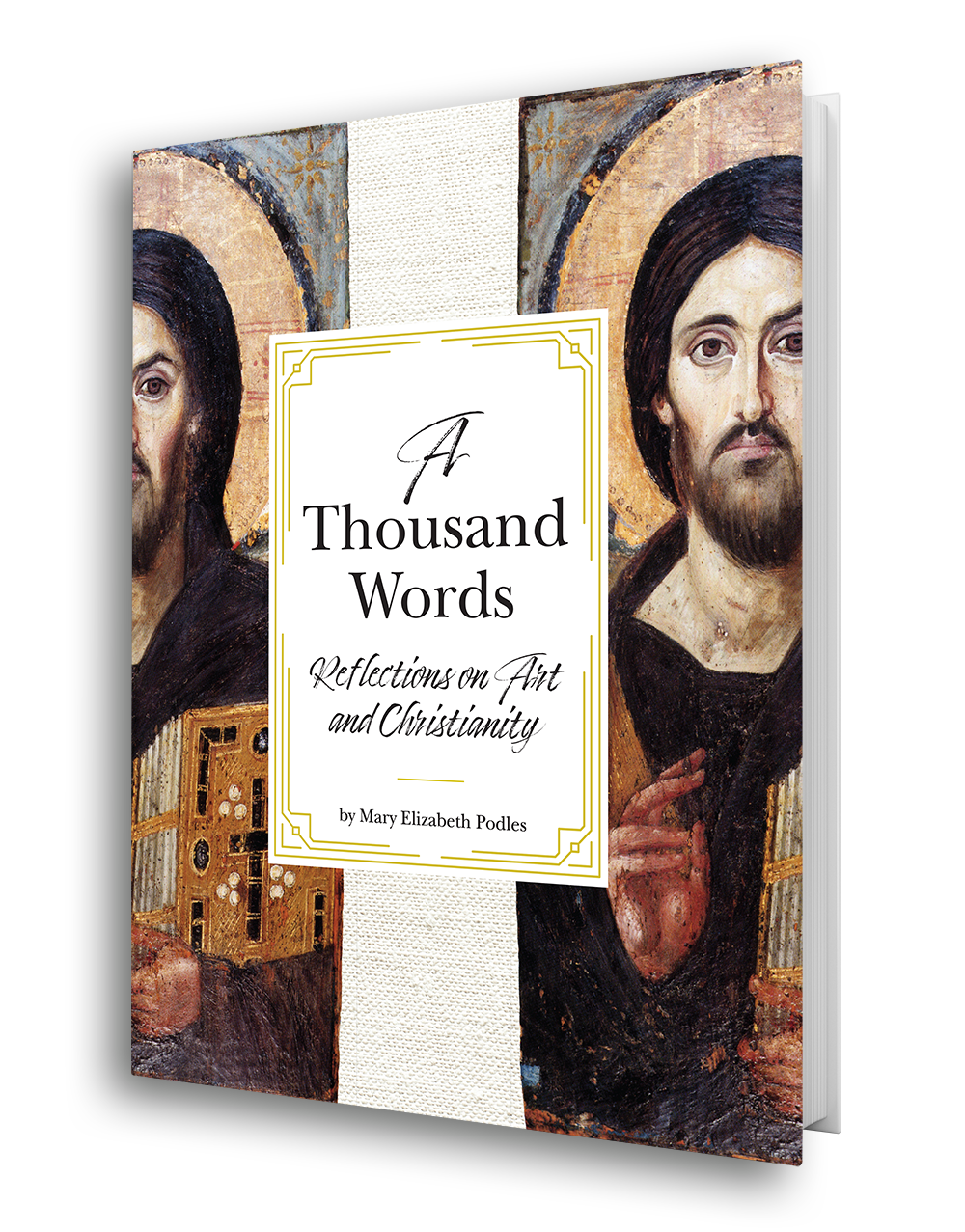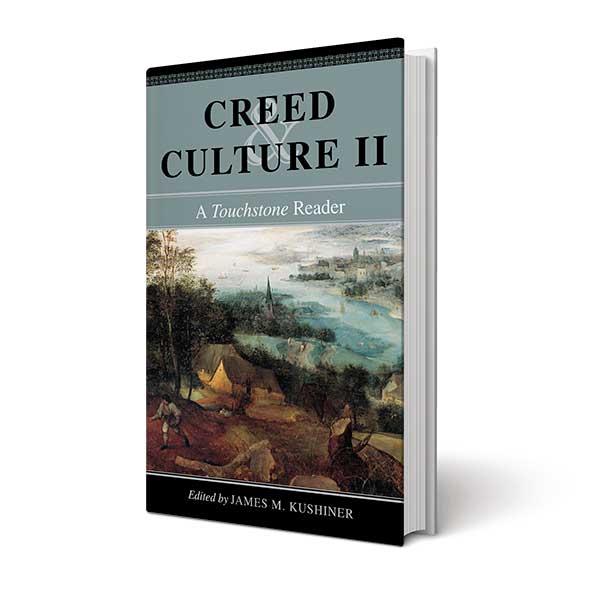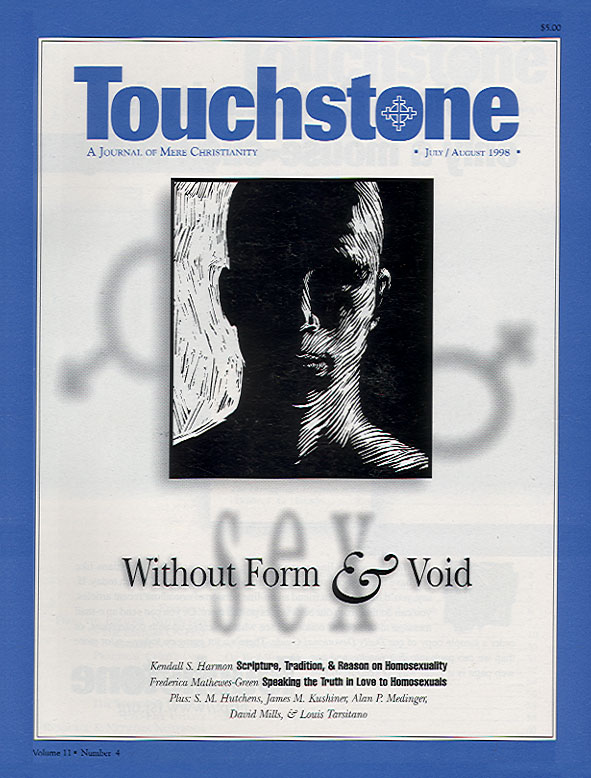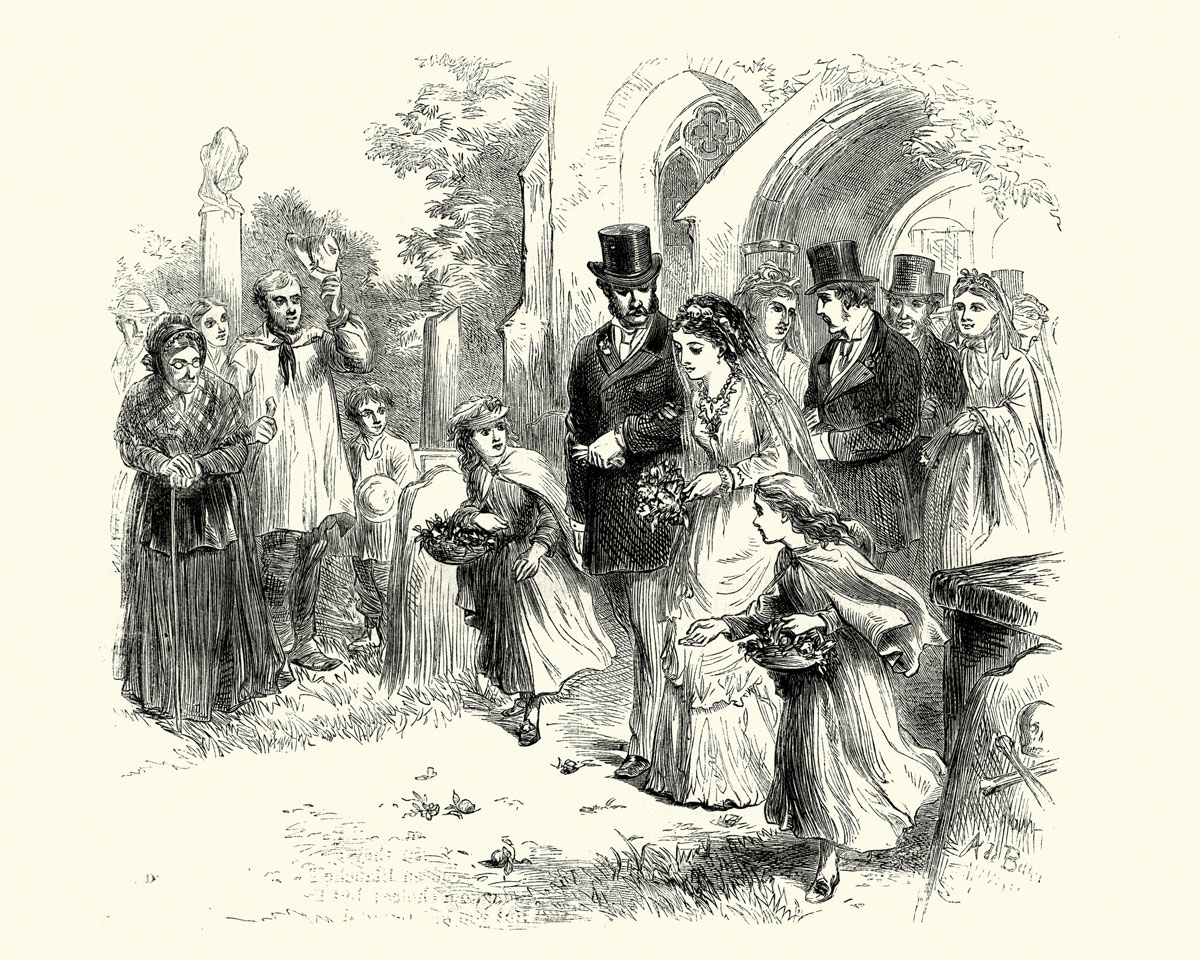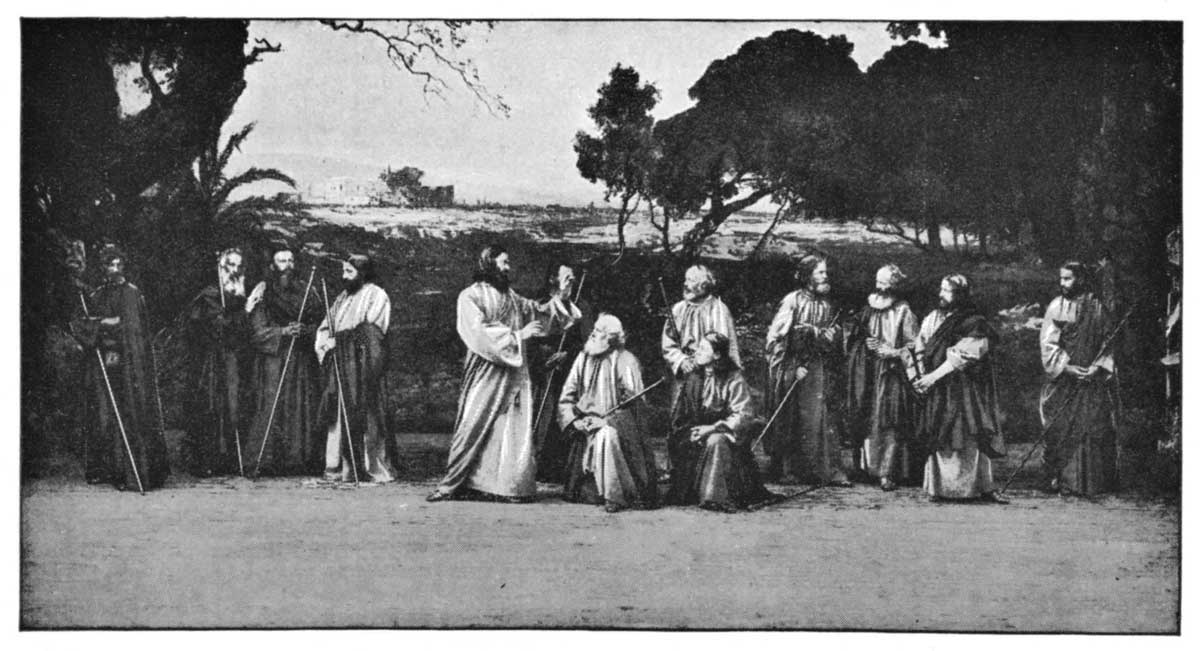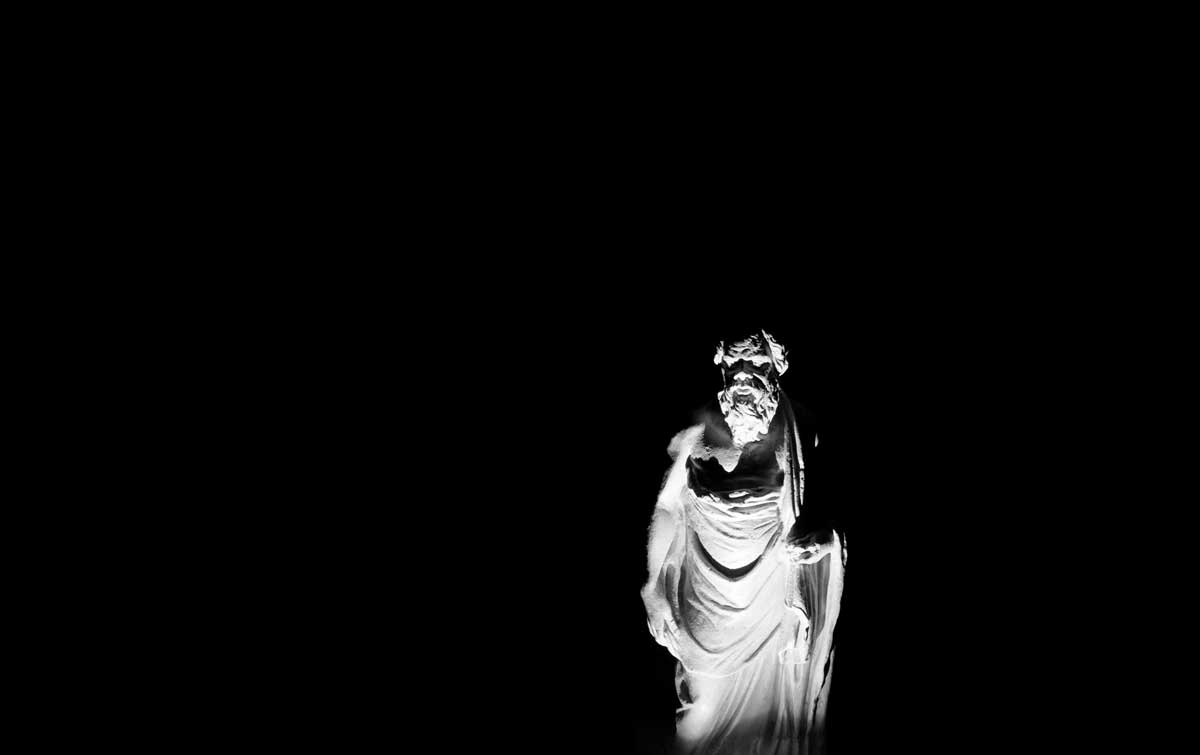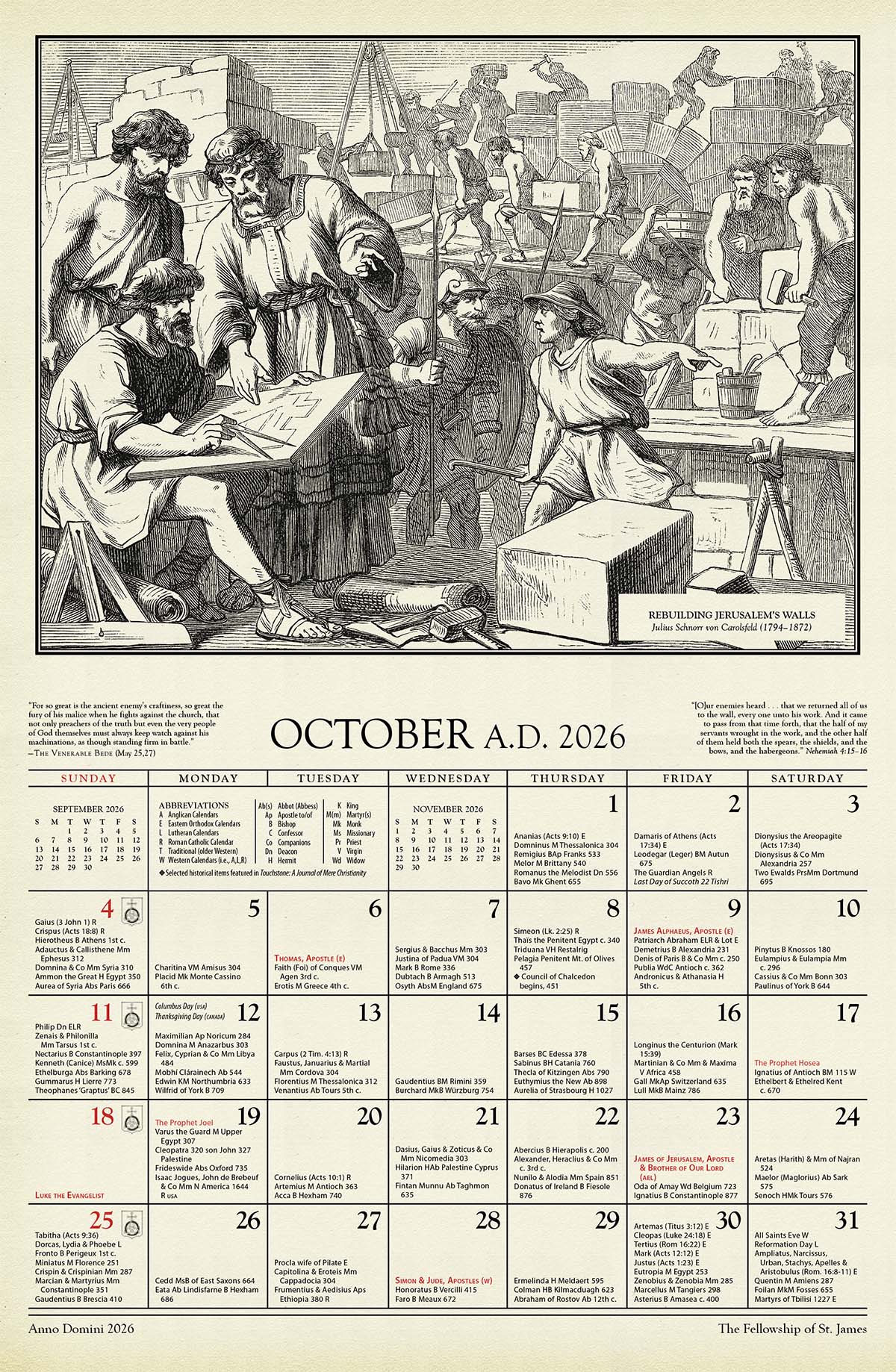Lambeth & the Ways of Sex
Louis R. Tarsitano on Episcopal Apostasy
Once every ten years, at the invitation of the Archbishop of Canterbury, the bishops of the Anglican Communion meet in England for a Lambeth Conference. These conferences, named for the Archbishop’s palace in London, originated in 1867 when seventy-six bishops attended, as a spiritual consultation of the chief Anglican pastors from around the world.
Much has changed since then. The conferences have been moved to larger facilities in Canterbury to accommodate the bishops who attend. This summer, for Lambeth 1998, some 800 bishops were expected. Many of the bishops, especially from Africa and Asia where the vast majority of Anglicans now live, are genuinely holy men of God. Many others, however, are indistinguishable from business executives on a junket or the liberal academics who regularly attempt to remake the world at meetings of the Modern Language Association. The planning of golf outings and “talking shops” likely received as much attention as the planning for worship.
More perhaps, since the bishops can no longer worship with one another as a single body. Present were a handful of women who believe themselves to be bishops, on the strength of the notion that their political success in their own tiny national churches can overturn the Holy Scriptures and nineteen centuries of male apostolic ministry. A number of bishops who hold to the ancient Faith had earlier announced that they would not “suit up” in their regalia with these women and their supporters, or receive their “ministry,” or even pose for a group portrait with them, for fear that such actions would tell the lie that they are what they cannot be.
This fractured communion among the Anglican bishops is a profound spiritual problem, but the liberal establishment, deriving primarily from the British and American churches, will only countenance a political approach to dealing with it. One of the “preparatory documents” distributed to all the bishops tells the entire story, at least from the liberal viewpoint. Entitled “Called to Full Humanity,” it is divided into three sections: “Human Rights,” “The Environment,” and “Human Sexuality.” Its obvious intent was to “stack the deck,” so that those bishops who might have preferred to discuss the “call to full Christianity” could be accused of heartless opposition to the secular happiness and welfare of others.
It is part three, “Human Sexuality,” that concerns us here in particular. A few citations will give the flavor of it (numbers refer to the paragraphs in the document).
48. Of all the themes to be considered at the Lambeth Conference 1998, that of sexuality is one of the most sensitive. Bishops know that there are deep divisions within and between our different cultures on a number of issues[—]divorce, cohabitation, marriage, polygamy, and homosexuality. . . .
56. Three different ways of sexual living may be distinguished:
Way One: Faithful and righteous family life, based on love and mutuality, remains an abiding way for all Christians. . . .
Way Two: Some expressions of sexuality, which are sadly present in all societies, are inherently opposed to the Christian way and are sinful. By way of example, such unacceptable expressions of sexuality include promiscuity (both heterosexual and homosexual), adultery, prostitution, child pornography, active paedophilia, bestiality and sadomasochism. . . .
Way Three: Yet there are other forms of behaviour which some Christians claim should not be regarded as inherently sinful but which may be less than complete expressions of the Christian way. These would include some forms of African traditional marriage and faithful cohabitation.
58. The suggestion here is that approaching divisive issues of human sexuality from a Way Three perspective allows for considerable differences among those who believe that they are faithful Christians. This Way Three approach might also allow Christians to be pastorally sensitive to those with whom they disagree.
62. Way One enshrines both faithfulness and righteousness and Way Two damages it. However, many would argue that Way Three does contain some of the features of both faithfulness and righteousness. It has long been recognised in the Anglican Communion that polygamy in parts of Africa, and traditional marriage, do genuinely have features of both faithfulness and righteousness. In addition, there seem to have been many examples of faithfulness and righteousness among those who have remarried after divorce. An increasing number of Anglicans also maintain that faithful homosexuality contains features of both faithfulness and righteousness.
65. The chief merit of this theological framework [Way Three] is that it distinguishes carefully between, on the one hand, abiding Christian/Jewish virtues that are held in tension in the Bible and in subsequent Christian history, and, on the other, contingent contexts and recipients that are forever changing. By identifying at the outset a set of relevant theological virtues, it is able then to bring them to the various moral issues surrounding sexuality and changing patterns of family life.
67. An abiding pattern is faithful and loving monogamy, which is seen as the Christian way for sexual relationships and for the responsible bringing up of children. Nevertheless, faithful cohabitation and polygamy are seen as less than ideal but not as inherently opposed to this ideal.
Certain errors and tricks are manifest here, beyond the petty weaseling about “pastoral sensitivity.” The document completely relativizes Christian identity, so that it does not reside in the objective matters of obedience to Christ, the Scriptures, and holy Tradition, but in the mere “belief” that one is a “faithful Christian.” Divorced people who have remarried under the lax regulations of the Western churches are reminded here that they are a part of this “sexual jackpot”—that a scriptural reevaluation of morality in general might call into question some of their own actions.
The document’s assertion that the bishops should oppose “promiscuity (both heterosexual and homosexual)” implies that there is a “good sort of homosexuality” that must be protected, begging the question of whether or not a single homosexual action is sinful and promiscuous by biblical standards. The Great Commission is inverted, and the call is issued for Christianity to conform to local cultures, rather than to convert all nations and their cultures to Christ. The contemporary conflict over sexual order is reduced to “differences” among Christians, hiding the fact that it is only the latest phase of mankind’s long rebellion against God and his revealed will.
Just as important, although less apparent, are at least two profound category errors in this pre-Lambeth excursion into the land of “human sexuality.”
The first is the term “human sexuality” itself. God created man male and female, as men and women, in an order of relations to himself and to one another. God has revealed that order of relations in the Scriptures. Male and female are, thus, categories of being; and the relations of men and women to one another and to the God who created them are unchangeable categories of morality.
Any discussion of men and women outside of their created nature is not a discussion of an alternative form of life, but a discussion of death. Any discussion of the relations of men, women, and God outside of the scriptural givens is not a discussion of an alternative morality, but of sin. Being and morality cannot be ultimately separated, of course, since sin is death, and God is life, and there is no sin in him.
The language of “human sexuality” moves the discussion from what human beings are (men and women: two sexes [not “genders”] created by God) to a claim that they possess something called “sexuality,” which can be discussed apart from their being, creation, and obligation to their Creator. Thus, in the world of “human sexuality,” human beings are not divided into two sexes by God, to come together by divine vocation in a lifelong sacramental union of one man and one woman that makes them “one flesh.” Rather, human beings “have sex,” which appears to mean any sort of genital act that gives pleasure, as one person uses another to fulfill his appetites.
There is no union of human flesh here, but only the consumption of it. For appearances’ sake, a few “rules for consumers” are suggested, such as not “hurting” the other person or frightening the horses, but this is not life with love, but life with licensed and unlicensed lusts.
The language of “human sexuality” shifts the meaning of “sex” from a divine imposition (imposing both a particular being and a limited range of physical and spiritual actions upon human beings that are expressive of, and consistent with, the divine will) to a list of physical activities to be chosen by the individual human person. This list can grow indefinitely, as each such activity gains societal acceptance. What it cannot contain is an understanding of the image of Abraham and Sarah cleaning Isaac’s bottom, and in the process revealing the fullness of their identity, their humanity, their sexes, their vocation, their unity, their faith, and their love.
The second category error is the notion of a moral “ideal.” There are no “ideals” in Christianity, whether of the philosophical or the sociological sort. There are only God’s commandments. To keep these commandments is life, to break them is death. To love Christ is to keep his commandments, and to break them is to hate our Savior. A redeemed sinner might face any number of very trying temptations to sexual disorder, or to any other sort of disorder. He might, indeed, succumb to them, with shame, repentance, and a cry to God to be released from them. But for a person or a group of persons who claim to be “Christian” to discount or to attack God’s order and commandments in advance, in preparation for the actual sin, is to demonstrate at least a lack of conversion, making the claim to Christian status dubious at best.
“Way Three” as proposed by the pre-Lambeth paper is an appeal to general apostasy. It is a political strategy for maintaining the earthly organization of the Anglican Communion, at the price of sacrificing communion with God Almighty, through his Son Jesus Christ. The authors would be better off returning to “thus saith the Lord,” because their “what’s the least we have to believe” and “what’s the most we can get away with” strategies were condemned by the Prophets most of three thousand years ago.
“Way Three” is the religion of Canaan, and not the religion of Zion.
Louis R. Tarsitano (d. 2005), a former associate editor of Touchstone, was a priest of the Anglican Church in America and rector of St. Andrew?s Church in Savannah, Georgia. He also was the co-author, with Peter Toon, of Neither Archaic Nor Obsolete: The Language of Common Prayer & Public Worship (Brynmill Press, Ltd., 2003).
subscription options
Order
Print/Online Subscription
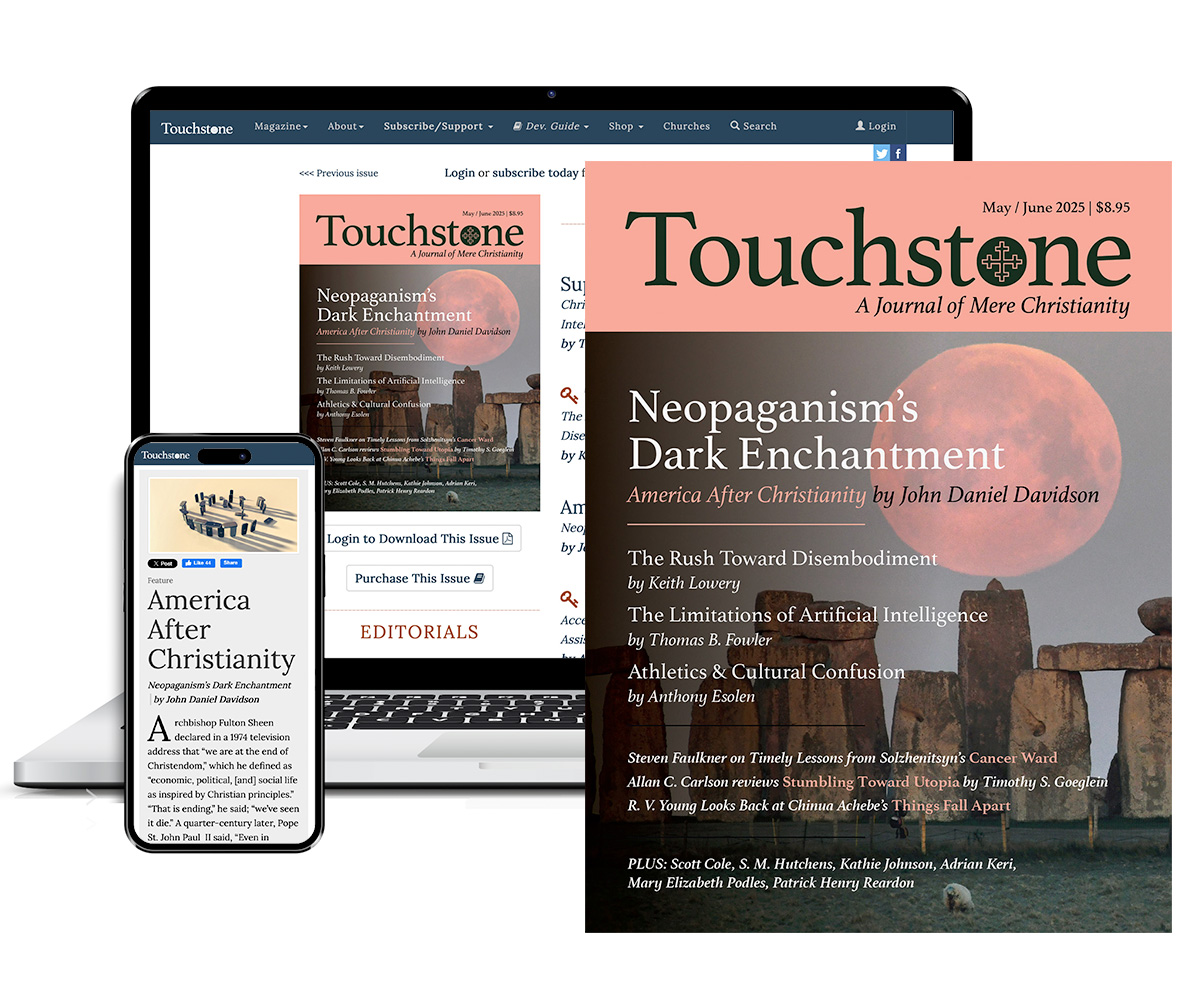
Get six issues (one year) of Touchstone PLUS full online access including pdf downloads for only $39.95. That's only $3.34 per month!
Order
Online Only
Subscription
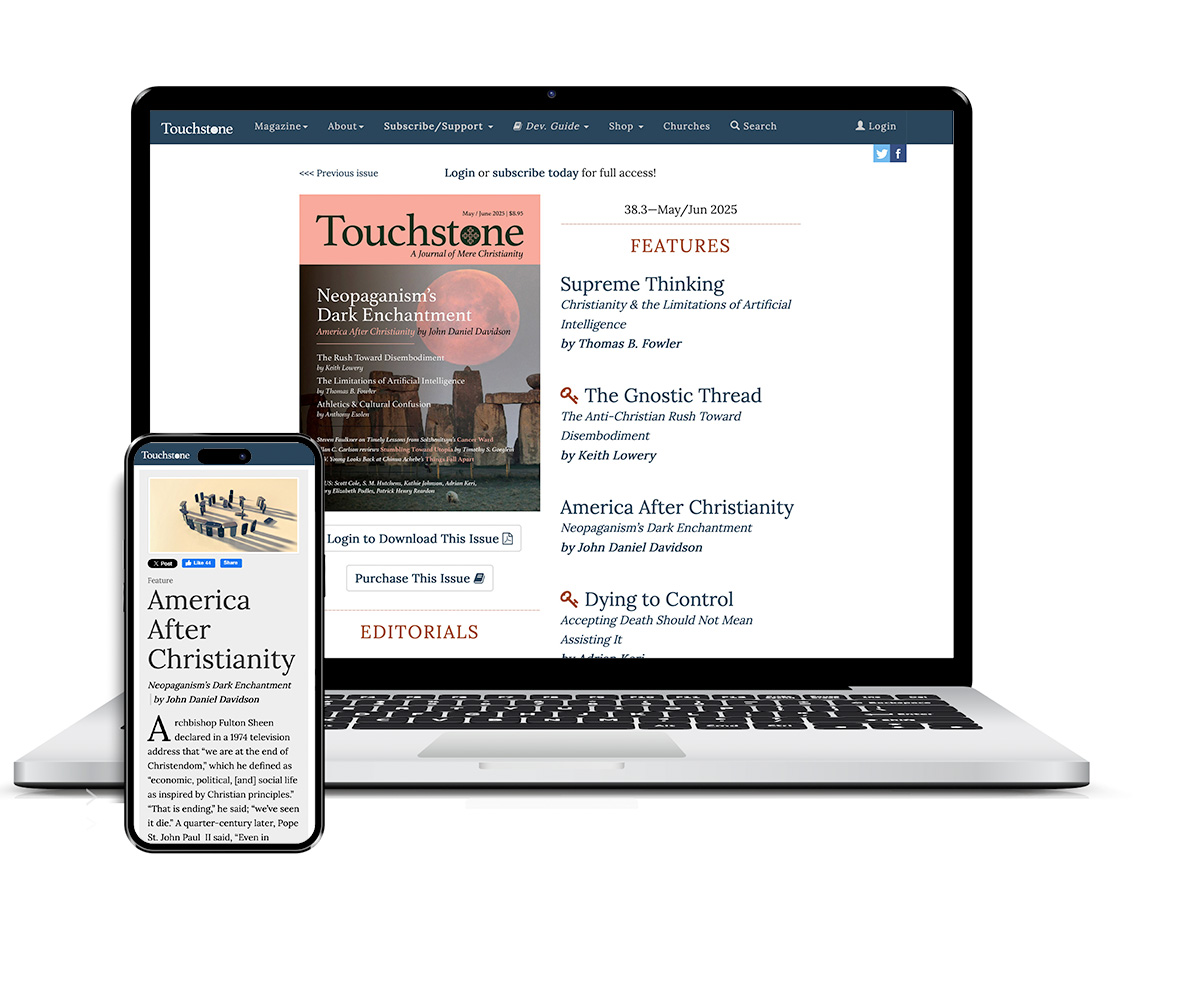
Get a one-year full-access subscription to the Touchstone online archives for only $19.95. That's only $1.66 per month!
bulk subscriptions
Order Touchstone subscriptions in bulk and save $10 per sub! Each subscription includes 6 issues of Touchstone plus full online access to touchstonemag.com—including archives, videos, and pdf downloads of recent issues for only $29.95 each! Great for churches or study groups.
Transactions will be processed on a secure server.
more on sex from the online archives

28.3—May/June 2015
Of Bicycles, Sex, & Natural Law
Describing Human Ends & Our Limitations Is Neither Futile Nor Unloving by R. V. Young
more from the online archives
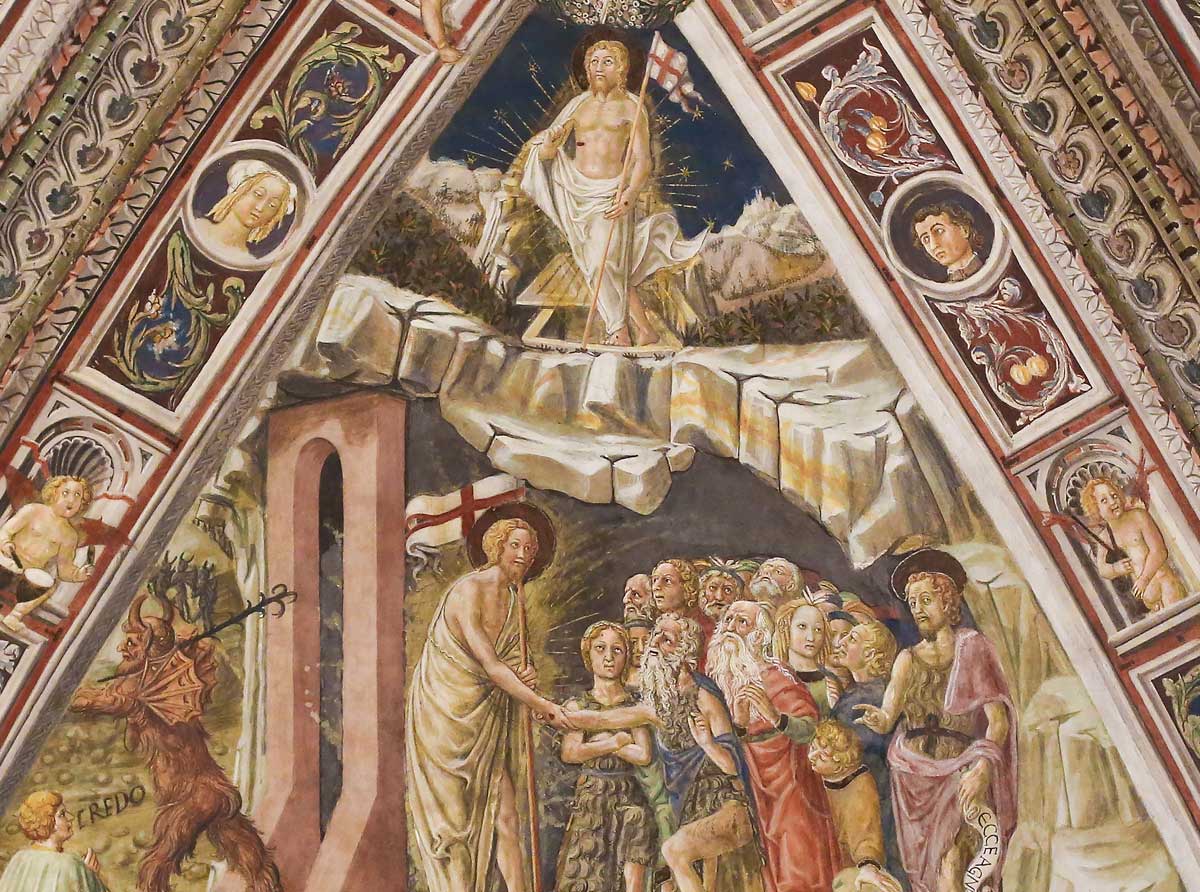
14.6—July/August 2001
The Transformed Relics of the Fall
on the Fulfillment of History in Christ by Patrick Henry Reardon
calling all readers
Please Donate
"There are magazines worth reading but few worth saving . . . Touchstone is just such a magazine."
—Alice von Hildebrand
"Here we do not concede one square millimeter of territory to falsehood, folly, contemporary sentimentality, or fashion. We speak the truth, and let God be our judge. . . . Touchstone is the one committedly Christian conservative journal."
—Anthony Esolen, Touchstone senior editor



